Introduction
Retrieval augmented generation (RAG) marked a breakthrough for enterprise AI by helping teams surface insights and answer questions at high speed. For many, it was a launchpad: copilots and chatbots that streamlined support and reduced the time spent searching for information.
However, answers alone rarely drive real business impact. Most enterprise workflows demand action such as submitting forms, updating records, or orchestrating multi step processes across diverse systems. Traditional automation tools like scripts, Robotic Process Automation (RPA) bots, and manual handoffs often struggle with change and scale, leaving teams frustrated by gaps and inefficiencies.
This is where agentic AI emerges as a game changer. Instead of simply delivering information, agents reason, act, and collaborate, bridging the gap between knowledge and outcomes and enabling a new era of enterprise automation.
Common Use Cases
Research assistants: Agents that search, summarize, and cross-check knowledge.
Business copilots: Agents that help with CRM, ticket handling, or HR queries.
Developer helpers: Code review, test generation, or multi-step debugging.
Operations bots: Agents that manage tasks like scheduling, report creation, and system monitoring.
Multi-agent simulations: Groups of agents acting together to model decisions, logistics, or negotiations.
These use cases show that agents aren’t just “smart chat interfaces”, they can perform coordinated, role-based work.
Patterns of agentic AI: Building blocks for enterprise automation
While the shift from retrieval to real world action often begins with agents that can use tools, enterprise needs do not stop there. Reliable automation requires agents that reflect on their work, plan multi step processes, collaborate across specialties, and adapt in real time, not just execute single calls.
The five patterns below are foundational building blocks seen in production today. They’re designed to be combined and together unlock transformative automation.
1. Tool use pattern: from advisor to operator
Modern agents stand out by driving real outcomes. Today’s agents interact directly with enterprise systems—retrieving data, calling Application Programming Interface (APIs), triggering workflows, and executing transactions. Agents now surface answers and also complete tasks, update records, and orchestrate workflows end-to-end.
Fujitsu transformed its sales proposal process using specialized agents for data analysis, market research, and document creation, each invoking specific APIs and tools. Instead of simply answering “what should we pitch,” agents built and assembled entire proposal packages, reducing production time by 67%.
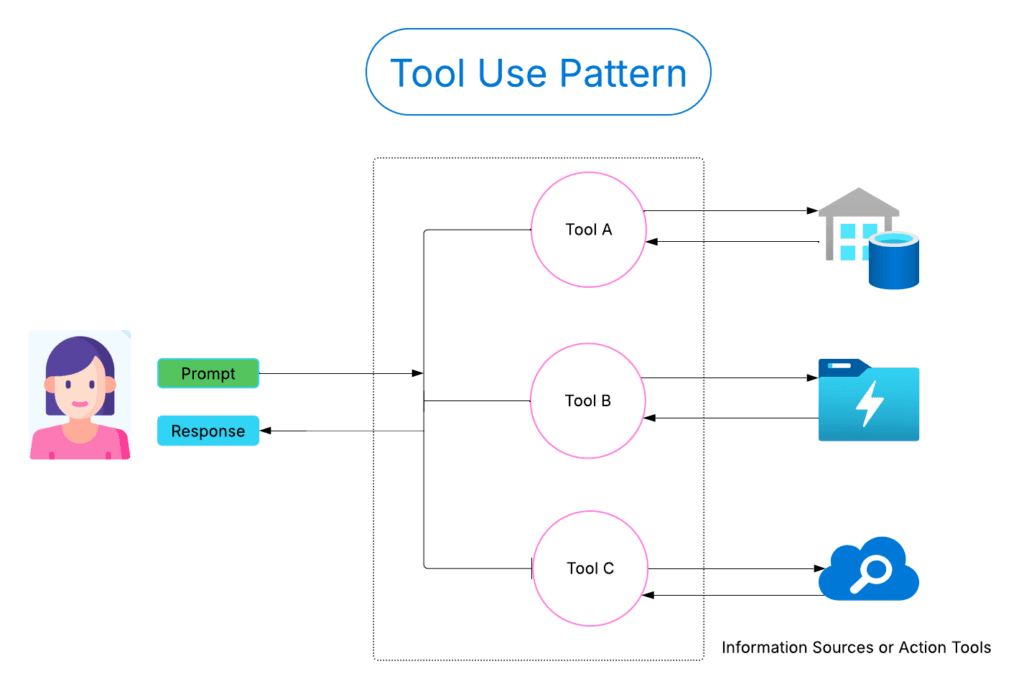
2. Reflection pattern: self-improvement for reliability
Once agents can act, the next step is reflection, the ability to assess and improve their own outputs. Reflection lets agents catch errors and iterate for quality without always depending on humans.In high-stakes fields like compliance and finance, a single error can be costly. With self-checks and review loops, agents can auto-correct missing details, double-check calculations, or ensure messages meet standards. Even code assistants, like GitHub Copilot, rely on internal testing and refinement before sharing outputs. This self-improving loop reduces errors and gives enterprises confidence that AI-driven processes are safe, consistent, and auditable.
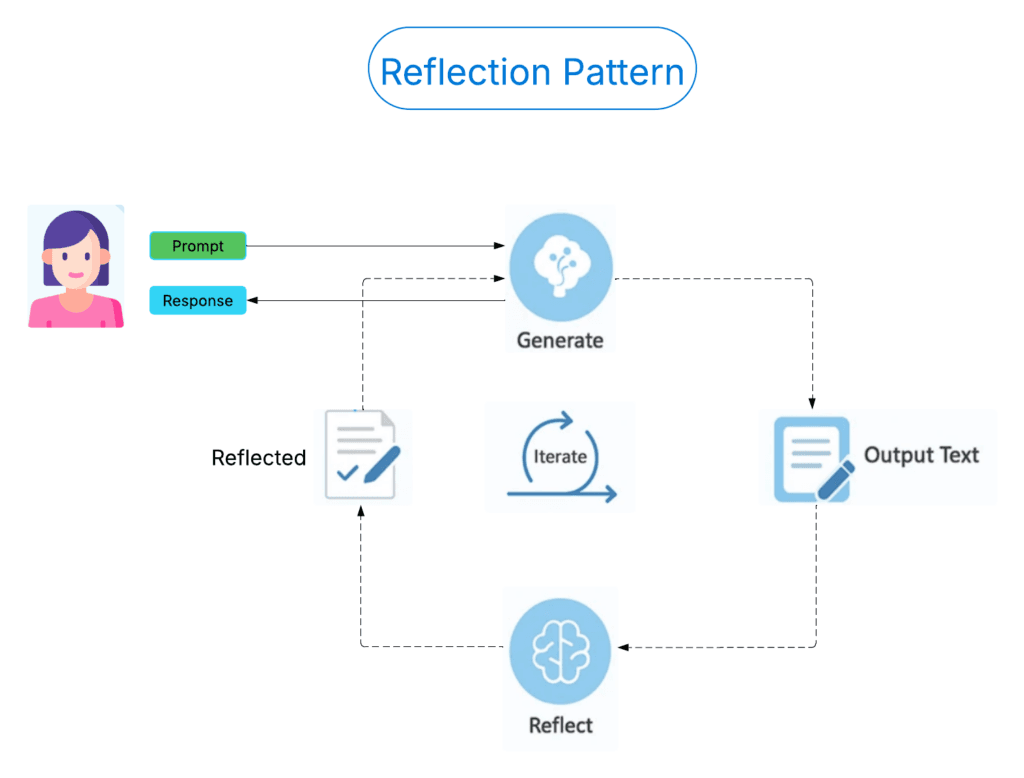
3. Planning pattern: decomposing complexity for robustness
Most real business processes aren’t single steps—they’re complex journeys with dependencies and branching paths. Planning agents address this by breaking high-level goals into actionable tasks, tracking progress, and adapting as requirements shift.
ContraForce’s Agentic Security Delivery Platform (ASDP) automated its partner’s security service delivery with security service agents using planning agents that break down incidents into intake, impact assessment, playbook execution, and escalation. As each phase completes, the agent checks for next steps, ensuring nothing gets missed. The result: 80% of incident investigation and response is now automated and full incident investigation can be processed for less than $1 per incident.
Planning often combines tool use and reflection, showing how these patterns reinforce each other. A key strength is flexibility: plans can be generated dynamically by an LLM or follow a predefined sequence, whichever fits the need.
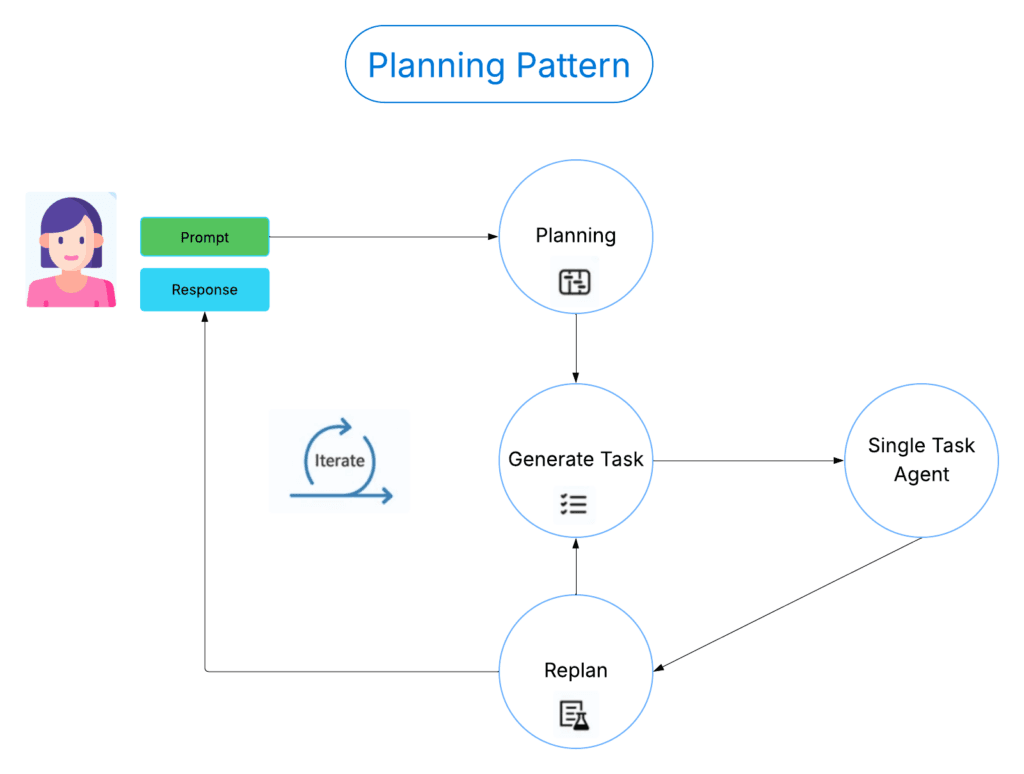
4. Multi-agent pattern: collaboration at machine speed
No single agent can do it all. Enterprises create value through teams of specialists, and the multi agent pattern mirrors this by connecting networks of specialized agents, each focused on different workflow stages, under an orchestrator. This modular design enables agility, scalability, and easy evolution, while keeping responsibilities and governance clear.
Modern multi-agent solutions use several orchestration patterns—often in combination—to address real enterprise needs. These can be LLM-driven or deterministic: sequential orchestration (such as agents refine a document step by step), concurrent orchestration (agents run in parallel and merge results), group chat/maker-checker (agents debate and validate outputs together), dynamic handoff (real-time triage or routing), and magentic orchestration (a manager agent coordinates all subtasks until completion).JM Family adopted this approach with business analyst/quality assurance (BAQA) Genie, deploying agents for requirements, story writing, coding, documentation, and Quality Assurance (QA). Coordinated by an orchestrator, their development cycles became standardized and automated, cutting requirements and test design from weeks to days and saving up to 60% of QA time.
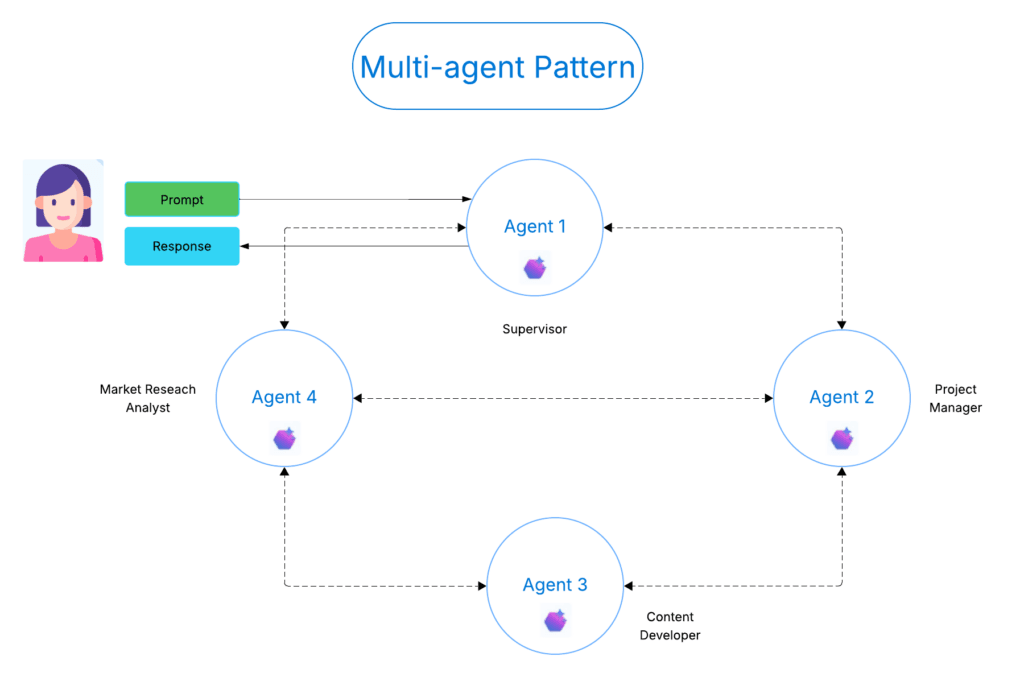
5. ReAct (Reason + Act) pattern: adaptive problem solving in real time
The ReAct pattern enables agents to solve problems in real time, especially when static plans fall short. Instead of a fixed script, ReAct agents alternate between reasoning and action, taking a step, observing results, and deciding what to do next. This allows agents to adapt to ambiguity, evolving requirements, and situations where the best path forward is not clear.
For example, in enterprise IT support, a virtual agent powered by the ReAct pattern can diagnose issues in real time: it asks clarifying questions, checks system logs, tests possible solutions, and adjusts its strategy as new information becomes available. If the issue grows more complex or falls outside its scope, the agent can escalate the case to a human specialist with a detailed summary of what’s been attempted.
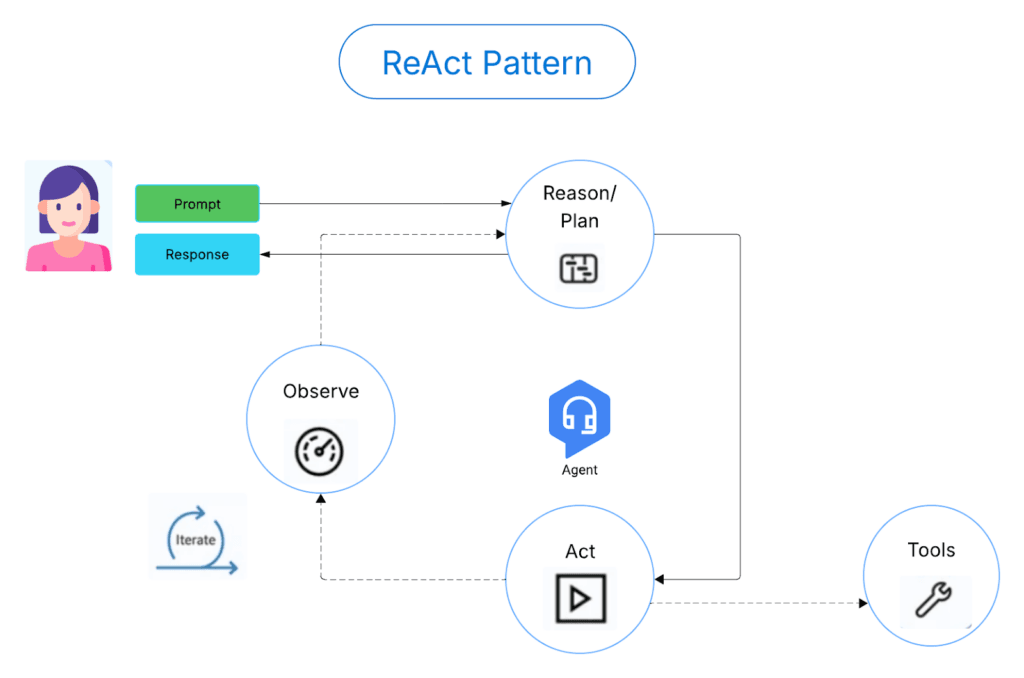
These patterns are meant to be combined. The most effective agentic solutions weave together tool use, reflection, planning, multi-agent collaboration, and adaptive reasoning, enabling automation that is faster, smarter, safer, and ready for the real world.
Key Challenges
- Reliability: Agents sometimes hallucinate or loop endlessly. Guardrails and validation are essential.
- Scalability: Running multiple agents or long chains can become expensive and slow.
- Security: Open tools and APIs expose risks like prompt injection or data leaks.
- Evaluation: It’s not always clear how to measure agent success beyond raw accuracy.
Looking Ahead
AI agents are evolving fast. We’re moving toward agent “factories” that can generate specialized agents on demand. These won’t just respond to prompts—they’ll reason, plan, act, and adapt to changing conditions. The focus now is on building frameworks and practices that make agents both powerful and trustworthy.
Reference:
https://learn.microsoft.com/en-us/azure/architecture/ai-ml/guide/ai-agent-design-patterns
https://www.microsoft.com/en/customers/story/21885-fujitsu-azure-ai-foundry


